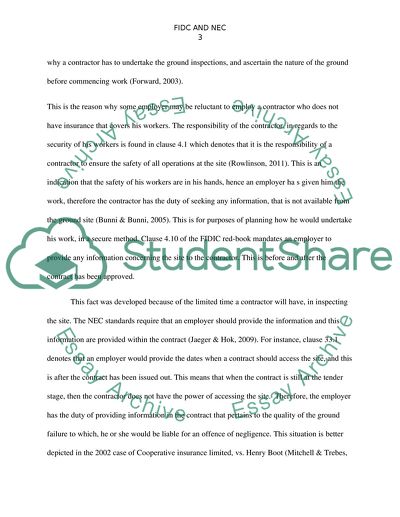Cite this document
(Comparison of FIDIC and NEC Contracts Essay Example | Topics and Well Written Essays - 1500 words, n.d.)
Comparison of FIDIC and NEC Contracts Essay Example | Topics and Well Written Essays - 1500 words. https://studentshare.org/engineering-and-construction/1690846-civil-engineering-contracts
Comparison of FIDIC and NEC Contracts Essay Example | Topics and Well Written Essays - 1500 words. https://studentshare.org/engineering-and-construction/1690846-civil-engineering-contracts
(Comparison of FIDIC and NEC Contracts Essay Example | Topics and Well Written Essays - 1500 Words)
Comparison of FIDIC and NEC Contracts Essay Example | Topics and Well Written Essays - 1500 Words. https://studentshare.org/engineering-and-construction/1690846-civil-engineering-contracts.
Comparison of FIDIC and NEC Contracts Essay Example | Topics and Well Written Essays - 1500 Words. https://studentshare.org/engineering-and-construction/1690846-civil-engineering-contracts.
“Comparison of FIDIC and NEC Contracts Essay Example | Topics and Well Written Essays - 1500 Words”. https://studentshare.org/engineering-and-construction/1690846-civil-engineering-contracts.


